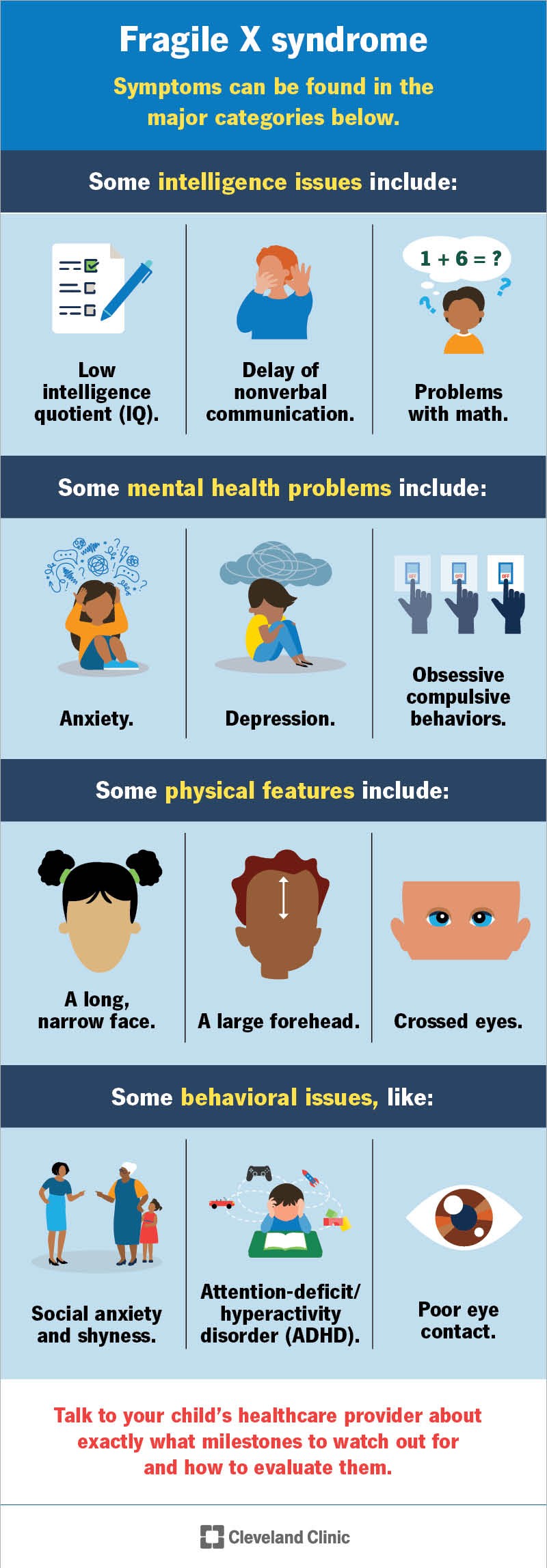
Contents
What Is the Life Expectancy for Fragile X Syndrome?
While there is no cure for fragile X syndrome, treatments can help those impacted and their families.
Fragile X syndrome (FXS) is a genetic disorder that causes intellectual impairment, behavioral and cognitive difficulties, and physical abnormalities. Despite these challenges, patients with FXS have a normal life expectancy. However, they may face learning and developmental issues. This syndrome is a chronic condition that persists throughout life, and independence is rare.
Although patients with FXS have a normal life expectancy, the disorder disrupts all aspects of their life, including employment, education, and social life. The severity of symptoms also affects the prognosis.
There is no cure for FXS. Management focuses on symptom relief through a multidisciplinary approach.
Some individuals with FXS are at higher risk for medical issues such as ear infections and seizures. Regular health exams and improved understanding of health concerns can help improve prognosis.
What are the signs and symptoms of fragile X syndrome?
Individuals with fragile X syndrome (FXS) may experience cognitive impairment, physical abnormalities, and behavioral problems such as anxiety, aggression, impatience, and repetitive behavior.
FXS symptoms vary among individuals, even within the same family.
Signs and symptoms of FXS include:
- Physical characteristics: Narrow face, large head, large and protruding ears, prominent forehead and chin, soft skin, flat feet, low muscle tone, double-jointed fingers, joint laxity, high arched palate, and large testicles (postpuberty)
- Behavioral challenges: Sensory processing difficulties (sensitivity to fabrics, noises, crowds, etc.), hand-flapping and hand-biting, poor eye contact, attention deficit hyperactivity disorder, anxiety, autism spectrum disorder, increased risk of aggression, and sleep disorders
- Medical issues: Ear infections, strabismus, and seizures
- Developmental delays: Delayed milestones, intellectual disability with IQ range of 20-70, toilet training problems, and failure to gain weight
FXS is a genetic condition. It affects both sexes, though men are more frequently and severely affected than women.
What causes fragile X syndrome?
Mutations in the FMR1 gene cause fragile X syndrome (FXS). This gene regulates the synthesis of a protein called FMRP, which promotes synapse formation and regulates protein production. Lack or shortage of this protein impairs nervous system function, leading to FXS symptoms.
FXS is inherited through the X chromosome. Premutation carriers, most commonly women, are more likely to have children with FXS. The severity of symptoms depends on the amount of protein the body can produce and the number of affected cells.
Women may produce some FMRP due to their two X chromosomes, resulting in fewer symptoms compared to men. FXS affects approximately 1 in every 4,000 men and 1 in every 8,000 women.
Patients with FXS typically experience delayed development. Most have some degree of mental disability, ranging from learning impairments to severe mental retardation. FXS is the leading cause of inherited intellectual disability and can occur in any ethnic group.
What are the treatment options for patients with fragile X syndrome?
While there is no cure for fragile X syndrome (FXS), various interventions can help those affected and their families. Proper education, therapy, and support can lead to improvement. A multidisciplinary approach is necessary to address the multiple challenges associated with FXS.
Early intervention is crucial for optimal learning in children with FXS. Family training, including physical, verbal, and sensory stimulation, and establishing routines, can be provided as services.
Managing patients with FXS:
- Genetic counseling: Families should undergo genetic counseling if a positive FXS test is detected. This helps educate them about the condition, its complications, and prognosis, enabling informed decisions and emotional support.
- Nonpharmacological management: Family education and counseling are essential for acceptance, understanding, patience, and dealing with challenges. Behavioral concepts and modifications in the environment can impact behavior. Psychotherapy and counseling can also be beneficial.
- Pharmacological management: Medications such as stimulants, non-stimulants, antipsychotics, and selective serotonin reuptake inhibitors may be prescribed to manage symptoms like irritability, attention deficit hyperactivity disorder, aggression, anxiety, and seizures.
- New treatments for FXS: Emerging therapies, such as metabotropic glutamate receptor antagonists, lithium, and selective GABA-B receptor agonists, are being researched.
- Managing associated medical conditions: Evaluation of cardiac functionality and monitoring for conductive hearing loss are important due to increased risks associated with FXS.
Advancements in FXS research offer hope for targeted therapies and interventions in the future. Efforts to introduce screening for FXS in newborns or infants may increase. Overall, the fragile X research community is optimistic about advancements in FXS treatment and anticipates potential gene therapy interventions.


